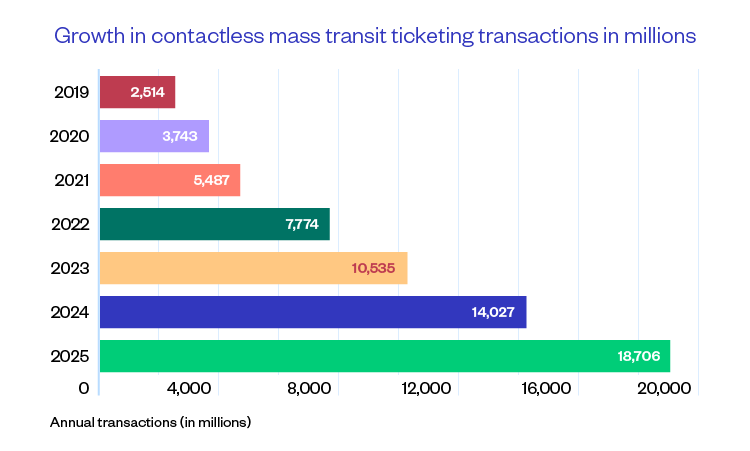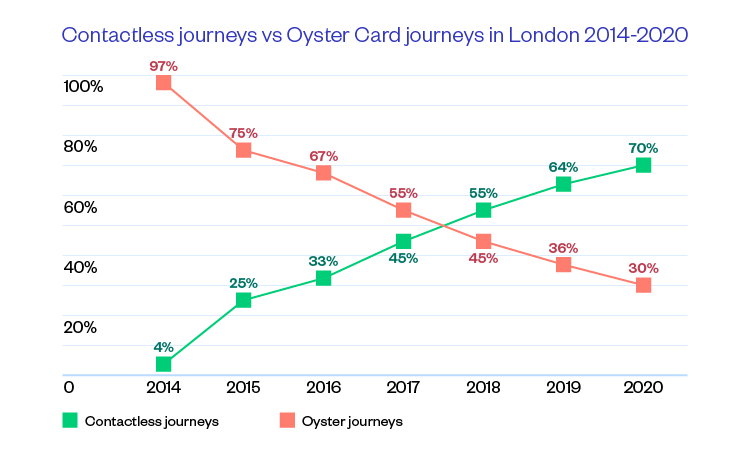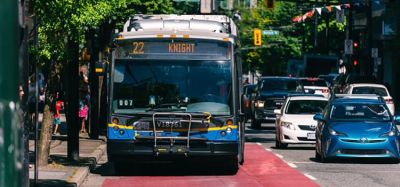The trends driving Europe’s mass transit future forward
- Like
- Digg
- Del
- Tumblr
- VKontakte
- Buffer
- Love This
- Odnoklassniki
- Meneame
- Blogger
- Amazon
- Yahoo Mail
- Gmail
- AOL
- Newsvine
- HackerNews
- Evernote
- MySpace
- Mail.ru
- Viadeo
- Line
- Comments
- Yummly
- SMS
- Viber
- Telegram
- Subscribe
- Skype
- Facebook Messenger
- Kakao
- LiveJournal
- Yammer
- Edgar
- Fintel
- Mix
- Instapaper
- Copy Link
Posted: 28 October 2020 | Ellerd Liem | No comments yet
COVID-19 has turned the public transport industry on its head. So what does a post-pandemic future in mass transit look like? Ellerd Liem, Mobility Expert at Payvision, explores how consumer preferences have affected Europe’s public transport sector, and the payment experiences that follow this change.


The emergence of COVID-19 has brought new meaning to transport. Globally, as government scrutiny and a flurry of lockdown and social distancing requirements came into play, travel by public transport – with its high density and potential for close proximity to others – became something to avoid unless absolutely necessary.
Even as transport authorities and operators implemented the appropriate health and safety measures to protect employees and passengers, cities around the globe have experienced a steep decline in ridership.
In Europe specifically, McKinsey analysis revealed that stay-at-home practices and workplace closures have lowered mass transit ridership in the region to within 10-15 per cent. The research also found that maintaining physical distancing in future travels will reduce the capacity of European public transport systems to between 15-35 per cent of pre-pandemic levels.
As pandemic restrictions ease, the recovery of Europe’s mass transit industry rests on its passengers’ trust in using public transport.
So what does the future hold for public transport in the region? How are major cities adapting to a new, cautious breed of commuters and travellers? And how are mass transit payment solutions evolving to ensure passengers feel reassured and safe on their journeys?
In a recent research report, we partnered with Kaleido Intelligence to analyse the European mobility sector and understand how it’s being shaped by recent global events. Here are a few key insights we derived:
The rise of alternative transportation
Even as a vaccine looms over the horizon today, it is likely that social distancing and essential-only travel restrictions will remain in force for a considerable period, until governments and local authorities are assured that their cities and populations are safe from a recurrence of the virus.
Couple this with requirements to use a mask and avoid touching surfaces outdoors, and it’s not hard to understand why public confidence (in using mass transit networks) is waning.
The result of this is that many will look to alternative transportation means in the short to medium term. We’re not talking about private car use here – the findings showed that several European cities have already taken steps to mitigate the anticipated impact of reduced public transport use, or rather, as people choose to ride their bikes or walk more:
- Berlin used drones to conduct aerial surveys in order to deploy ‘pop-up’ cycling lanes in the Friedrichshain-Kreuzberg borough within 48 hours.
- London announced a ‘Streetspace Plan’ to allow for 10 times more cycling and five times more walking traffic – changes that are expected to reduce total public transport journeys from 50 per cent in 2019 to 35-40 per cent in future.
- France introduced a $22 million scheme to reduce repair costs, encourage bike riding and subsidise parking. It also aims to increase the number daily commutes by cycling from 3 per cent to 9 per cent in 2024.
What this means for transport agencies and operators
With ridership on the decline, transit authorities must prioritise rebuilding passenger trust.
In order to attract riders again, transport operators must ensure that health and safety measures are in place to prevent COVID-19 contagion levels from regressing, and provide a customer experience that’s on par with or better than what modern ride-sharing services can offer.
One of the core ways to achieve this is to introduce ‘ticketless’ fares – also commonly referred to as account-based ticketing – which allow passengers to pay for their trips using a mobile barcode, contactless credit or debit card, or a virtual EMV token. Account-based ticketing is becoming increasingly commonplace across today’s public transport networks, and it’s easy to understand why:
- Ticketless fares take away the complexities of payments for travellers, including having to withstand long queues at ticketing stations during peak hours and holding on to pieces of paper as proof of purchase. Ticketless travel also removes the need to handle cash, which increases the hygiene factor that will boost rider confidence.
- A ticketless fare system can help transport operators improve their ticketing infrastructure, reduce back-office processing costs and realise considerable savings associated with card acquisition and issuance. Many account-based ticketing setups today also enable transport operators to see in-depth insights around transactions and customer behaviour, which can be used to promote better travelling experiences on the whole.
From contactless to open loop: paying with what’s in your wallet
Account-based and other contactless ticketing practices have already been around for a while. As new modes of transport integrate into our lives, consumers will expect seamless payment experiences however they choose to ride.
Contactless payments are soaring in popularity as it is, and we expect contact-free transactions in mass transport to number over 18.7 billion by 2025.


Source: Kaleido Intelligence
Contactless payments take a lot of the friction out of travelling on public transport networks, so naturally, what consumers expect next is the ability to pay with whatever’s already in their wallets, instead of having to maintain a separate card account just for commuting. Or in other words, an open loop payment system.
Implementing an open loop payments set up gives travellers the same freedom they receive in modern shopping experiences; to be able to pay their way with a preferred contactless debit or credit card whether they’re travelling on your network or otherwise.
Open loop payments: the next logical step for transport agencies and operators
Closed-loop smart cards and other legacy payment systems are, among other inconveniences, costly to manage. For example, in 2010, TfL spent $148 million annually to manage its Oyster Card scheme.
Research has also found that most public transportation operators end up spending between 10-15 per cent of their revenue just in collecting fees from passengers using tickets.
Open loop systems are also typically integrated with account-based ticketing systems, which can both automatically select the best available fare for consumers while streamlining transaction processing for transit service providers.
When it comes to open loop transit payments in the region, Europe’s most successful example has to be Transport for London’s move to deploy an intermodal transit infrastructure earlier on in the decade. After making the move to an open loop payments system with account-based ticketing capabilities, TfL saw an increase in the proportion of contactless transit journeys made in London between 2014 and 2019 (compared to Oyster card journeys). In 2018, contactless transit journeys overtook a declining proportion of journeys made with an Oyster card.


Source: Kaleido Intelligence
As public transportation methods continually evolve to prioritise the customer experience, transport authorities must innovate to enhance operating efficiency, boost traveller confidence and keep the masses coming back. Open loop payments are keeping today’s smart cities moving, and are opening the doors for bigger possibilities in tomorrow’s travel.
To learn more about how the mass transit sector is transforming, and how your transport network can adapt to upcoming trends and payment innovations, check out more of our expert insights here.
Related topics
Mobility Services, Public Transport, Ticketing & Payments
Related organisations
Payvision
Related people
Ellerd Liem








